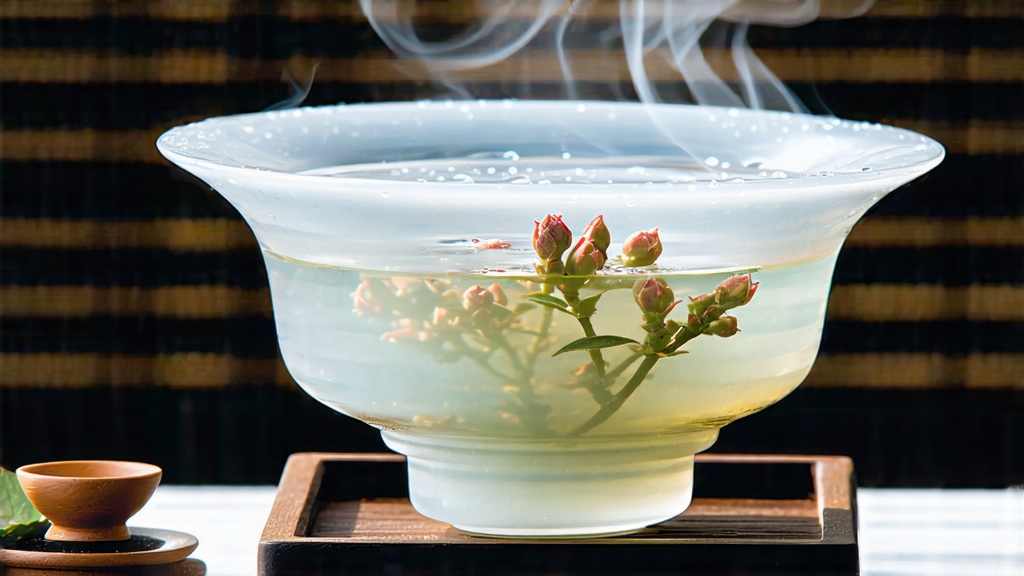
White tea is the most minimally treated of all China’s six great tea families, and within that quiet realm White Hair Silver Needle—Bai Hao Yin Zhen—stands as the purest expression of leaf, air, and time. To the uninitiated it can look almost like nothing at all: a loose pile of downy, ivory-coloured buds that give off a faint scent of hay left overnight in summer rain. Yet steep those buds for thirty seconds and the cup lights up with the colour of late-afternoon sunshine, delivering a liquor so soft it seems to vanish on the tongue—until a cool, lilting sweetness returns minutes later, as though the tea had secretly placed a mint leaf under your palate. This is the paradox of Silver Needle: the less is done to it, the more it gives back.
Historical whispers
The first written record that scholars agree refers specifically to Yin Zhen appears in the 1796 edition of the Fúzhōu Prefecture Gazetteer, where tribute teas from northern Fujian were catalogued for the Jiaqing Emperor. Farmers in the rugged coastal counties of Fuding and Zhenghe had already been air-drying extra-slender buds for local doctors, who prized their “cooling” nature, but imperial demand transformed a rustic medicine into a court luxury. Legend claims that only virgins armed with golden scissors were allowed to harvest the buds at dawn during the three-day window between Qingming and Guyu, lest fingernail heat bruise the leaf. While the detail is surely romantic embroidery, it hints at the extreme gentleness demanded at every stage of Silver Needle’s life.
Terroir and two hometowns
Today the name “Silver Needle” is legally protected to buds plucked within Fuding City and Zhenghe County, both in Fujian Province. Fuding sits on the East China Sea; its red, sandy, slightly acidic soils drain quickly, forcing the tea bushes (predominantly Fuding Da Bai cultivar) to send down deep roots and concentrate amino acids. Zhenghe, forty kilometres inland and 200 m higher, enjoys cooler nights and persistent mist; the local Zhenghe Da Bai cultivar develops thicker trichomes, yielding buds that look almost dipped in powdered sugar. Aficionados learn to taste the difference: Fuding versions tend toward bamboo and honeydew, while Zhenghe leans into white peach and flint. Both, however, must be picked when the bud is still closed like a grain of rice and sheathed in its own down—no leaf, no stem, no second chances.
Crafting nothing
The entire craft of Silver Needle can be written on a single line: pluck, wither, dry. Yet within that simplicity lies a choreography of micro-decisions that separates sublime tea from expensive straw. Picking begins the moment morning dew evaporates—usually between 9 a.m. and noon—when bud moisture has dropped enough to avoid souring but the sun is still too mild to oxidise enzymes. The harvest is spread in a single layer on bamboo trays woven so finely that no bud can fall through. For the next 36–48 hours the trays rest on racks inside sun-warmed, north-facing rooms whose latticed windows admit a draught but never a glare. Every twenty minutes a master “witherer” slides a forearm under a tray, lifts it slightly, and feels for temperature and suppleness; if the buds grow hot they are hoisted higher toward the ceiling, if they stiffen they are carried closer to the doorway. Around midnight, when outside humidity spikes, charcoal embers buried in ash may be introduced to the room’s underfloor channels, adding a whisper of 28 °C warmth that coaxes moisture from the core without waking the oxidative enzymes. Finally, when a bud snaps cleanly and the down has turned from silvery grey to the colour of antique ivory, the tea is given a ten-minute “fixation” bake at 60–70 °C—just enough to drop residual moisture to 5 %. No rolling, no shaping, no charcoal roasting: the bud’s natural crease remains, a quiet signature of non-intervention.
Ageing potential
Unlike most green teas, Silver Needle is celebrated for improving in the cupboard. Over years the residual enzymes continue a slow, non-enzymatic browning that converts grassy norisoprenoids into honeyed damascenones and adds the scent of dried apricot. A 2012 study at the Fujian Agriculture